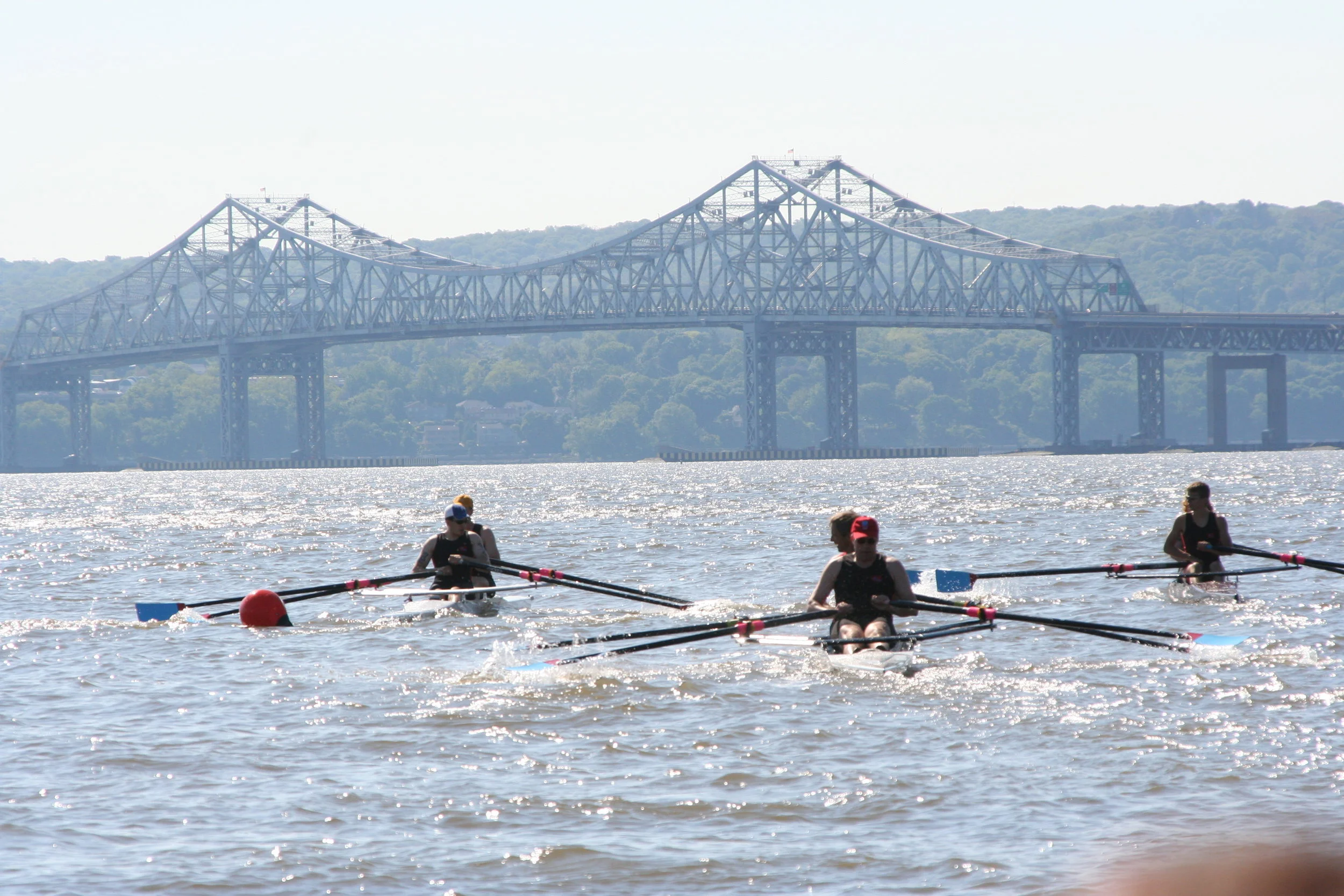History
The River Rowing Association (RRA) was founded by Peter Fernberger and Bronwyn Woodhead in 2002 along the banks of the Hudson River in Nyack, NY. The RRA started with a single 8-man shell and, on most days, 8 high school rowers from Nyack and surrounding areas. In 2003, newly joined Directors Peter Klose and Ivan Rudolph-Shabinsky converted the RRA into a 501(c)3 and began expanding the programming for both youth and adults. In 2013, bridge construction of the new Tappan Zee Bridge forced the program to relocate to Rockland Lake. In 2016, the organization was renamed the Rockland Rowing Association - reflecting both it's move from the Hudson River and a desire to make it easier to find. Today, the RRA has nearly 100 rowers and delivers a broad range of programs for Rockland, Bergen and Westchester area residents.
rowing's working class roots
Rowing in the United States has two root sources. First, rowing was a sport of working class men - typically those who worked on the water and around the docks. Perhaps the most famous early American rower was John B. Kelly, Sr. - or "Jack" Kelly - who started work as a brick layer in Philadelphia. Jack Kelly was a dominant rower in the US - winning several national championships. Despite (or perhaps because of) his rowing success, his entry to row at the 1920 Henley Royal Regatta was rejected by the race stewards - in part because he was not considered a "gentleman" due to his occupation. Jack Kelly exacted revenge that year by attending the 1920 Olympics and winning the single sculls race against the British rower who had earlier that year won Henley. He also won gold in the double that year and again in 1924. Jack went on to become a millionaire owner of Kelly Brickworks in Philadelphia, married a German fashion model and fathered several children including the famous Academy Award winning Grace Kelly as well as "Jack" Kelly, Jr. Jack, Jr. further avenged his father's slight at Henley by winning the Diamond Sculls event there in 1947 and 1949, while also representing the US at 5 Olympics and ultimately becoming president of the US Olympic Committee.
collegiate roots
The second root source for US rowing was collegiate rowing. The Harvard / Yale race is the oldest intercollegiate sporting competition in the history of American universities - first contested in 1852. Collegiate rowing was first a sport only for young gentlemen. Though by 1927, women were rowing in England and in 1938 Ernestine Bayer began the first American women's rowing club. Today, collegiate rowing has grown dramatically for both men and women. In particular, as a result of the success of Title IX, there are now nearly 100 Division I NCAA collegiate rowing programs for women.
Nyack Rowing Association Boathouse, late 1800's
Rowing in rockland
Rowing has been a part of Rockland County since the late 1800's when the Nyack Rowing Association and the Piermont Rowing Club came into existence. The two clubs were situated on the Hudson, but would compete every year on Rockland Lake at the Farmer's Day Picnic.
Today, Rockland Rowing builds on all this rowing history by providing all members of surrounding communities with an opportunity to row. It is not unusual for young rowers growing up here in Rockland to utilize rowing as a means to help them obtain rowing scholarships to a college of their dreams. Rockland Rowing's alumni have gone on to row for dozens of colleges, including: Binghamton, Boston College, Bucknell, Buffalo, Canisius, Colgate, Columbia, Cornell, Delaware, Drexel, Fairfield, Fordham, Hamilton, Harvard, Hobart, Lehigh, Marist, Ohio State, Sacred Heart, Syracuse, Temple, Tufts, UCLA, UNC, USC, Williams, and Wisconsin. In fact, each year most graduates of our competitive team are recruited to row in college. But collegiate rowing needs neither to be your goal as a junior rower, nor part of your history as an adult rower, to make Rockland Rowing a great part of your life.




